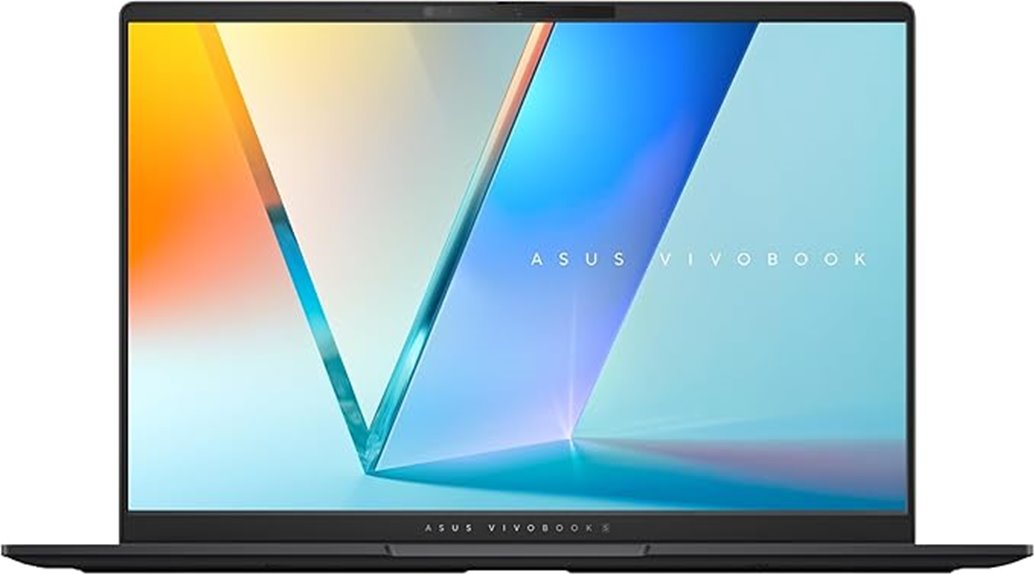Best Laptops for Fusion 360 (Top 5 Picks for 2025)
For the best performance in Fusion 360 in 2025, consider the Apple 2024 MacBook Pro with the M4 chip, Acer Swift X 14, Apple 2025 MacBook Air 15-inch, ASUS Vivobook S 14 OLED, and Samsung Galaxy Book4 Pro. Each of these laptops packs powerful processors, dedicated graphics, and stunning displays to handle demanding design tasks smoothly. You’ll find the perfect match for your needs, and there’s more to discover about their features ahead.
In the interest of full disclosure, we would like to inform you that some links on our website are affiliate links. By clicking on these links and completing a purchase from our partners, we may receive a nominal commission at no extra cost to you. Rest assured, our affiliate partnerships do not compromise the integrity of our editorial content or product evaluations. For further clarification, kindly refer to our comprehensive affiliate disclosure.
Table of Contents
What Are the Best Laptops for Fusion 360 to Buy This Year?
Here are my top picks for the best laptops for fusion 360 you can consider this year.
Apple MacBook Pro Laptop with M4 chip (14.2-inch, 16GB RAM, 512GB SSD)
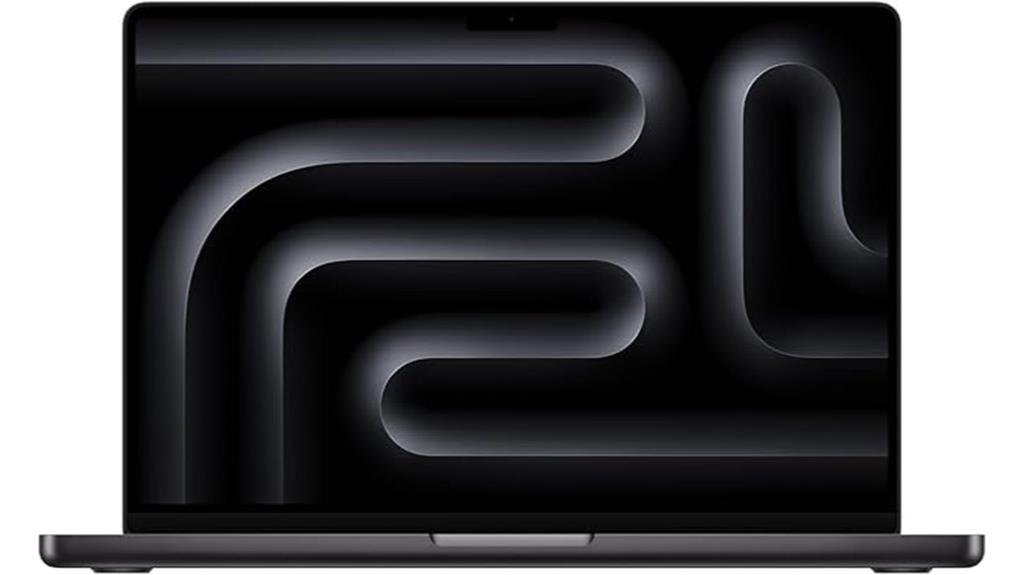
If you’re a designer or engineer looking for a laptop that can handle demanding applications like Fusion 360, the Apple 2024 MacBook Pro with the M4 chip is an outstanding choice. With its 10-core CPU and GPU, you’ll enjoy incredible speed for multitasking and running productivity apps. The stunning 14.2-inch Liquid Retina XDR display offers vibrant visuals with a peak brightness of 1600 nits, making your designs pop. Plus, with 16GB of RAM and a 512GB SSD, you’ll have plenty of memory and storage for your projects. Seamlessly integrate with your other Apple devices to enhance your workflow and productivity.
Best For: Designers and engineers who need a powerful laptop for demanding applications like Fusion 360.
Pros:
- Exceptional speed with the 10-core M4 chip for multitasking and running productivity apps.
- Stunning 14.2-inch Liquid Retina XDR display with 1600 nits peak brightness for vibrant visuals.
- Seamless integration with other Apple devices enhances workflow and productivity.
Cons:
- Higher price point compared to other laptops with similar specifications.
- Limited upgrade options for RAM and storage post-purchase.
- May have compatibility issues with some non-Apple software applications.
Acer Swift X 14 Laptop (SFX14-72G-77NJ)
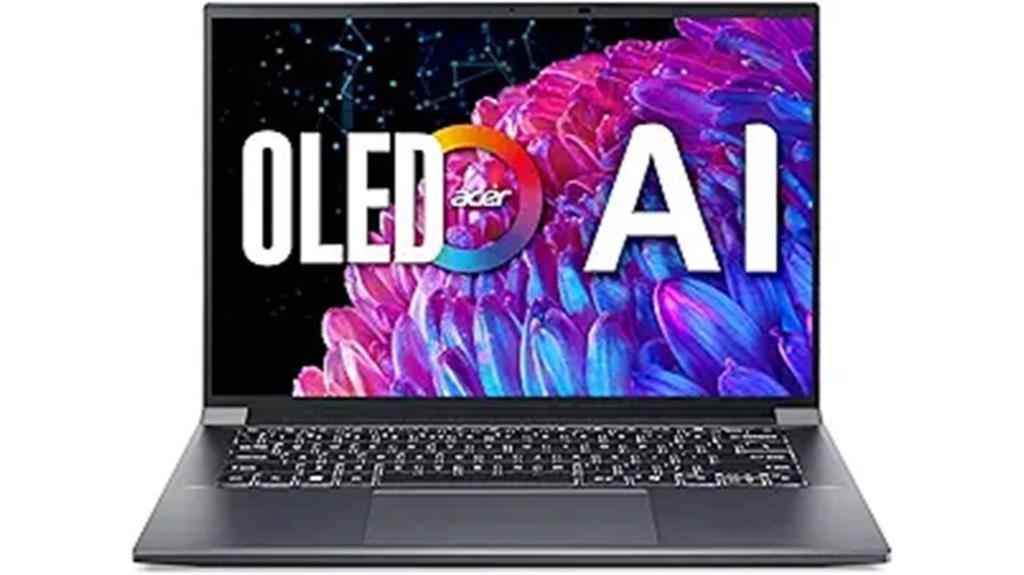
The Acer Swift X 14 Laptop (SFX14-72G-77NJ) stands out as an exceptional choice for designers and engineers using Fusion 360 in 2025, thanks to its powerful Intel Core Ultra 7 processor and NVIDIA GeForce RTX 4060 GPU. You’ll appreciate the stunning 14.5-inch OLED display, boasting a resolution of 2880 x 1800 and a smooth 120Hz refresh rate. With 16GB LPDDR5X memory and a 1TB PCIe Gen 4 SSD, multitasking becomes effortless. Plus, the AI-assisted Copilot enhances your workflow, while top-notch collaboration tools ensure clear video calls. This laptop truly delivers performance and efficiency for your design needs.
Best For: The Acer Swift X 14 Laptop (SFX14-72G-77NJ) is best for designers and engineers looking for a high-performance machine to run graphically demanding applications like Fusion 360.
Pros:
- Powerful Intel Core Ultra 7 processor and NVIDIA GeForce RTX 4060 GPU for exceptional performance.
- Stunning 14.5-inch OLED display with high resolution and refresh rate for detailed visuals.
- Excellent collaboration features, including a high-quality webcam and AI noise reduction for clear video calls.
Cons:
- Limited upgradeability options due to soldered RAM and SSD.
- Potentially high price point compared to other laptops in the market.
- Battery life may vary significantly under heavy workloads, especially during intensive tasks.
Apple 2025 MacBook Air 15-inch Laptop with M4 Chip
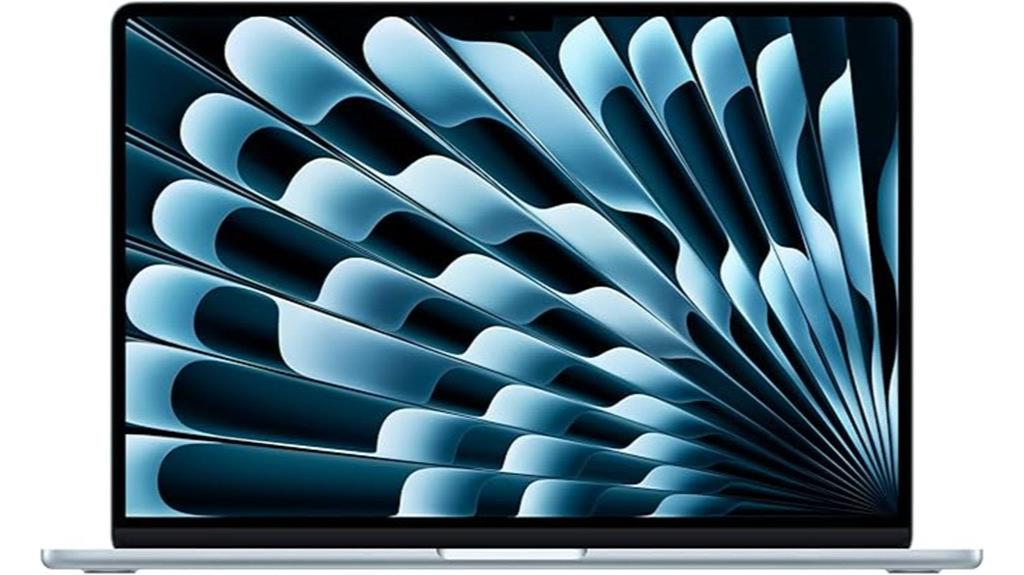
Designed for creative professionals and students alike, the 2025 MacBook Air 15-inch with the M4 chip stands out as a top contender for running Fusion 360. Its powerful M4 chip delivers exceptional speed and fluidity, perfect for multitasking and video editing. With up to 18 hours of battery life, you can work uninterrupted, whether plugged in or on the go. The stunning 15.3-inch Liquid Retina display showcases rich colors and sharp details, enhancing your design experience. Plus, the advanced camera and audio features ensure high-quality visuals and sound during presentations, making this MacBook Air an impressive choice for any creative project.
Best For: Creative professionals and students looking for a powerful and portable laptop for multitasking and design work.
Pros:
- Exceptional Performance: The M4 chip provides enhanced speed for multitasking, video editing, and gaming.
- Stunning Display: The 15.3-inch Liquid Retina display offers rich colors and sharp details for an immersive design experience.
- Long Battery Life: Up to 18 hours of battery life allows for extended use without interruptions.
Cons:
- Limited Ports: Only two Thunderbolt 4 ports may require additional adapters for certain peripherals.
- Price Point: As a premium device, it may be more expensive compared to other laptops with similar specifications.
- Weight: The 15-inch size may be less portable for some users compared to smaller models.
ASUS Vivobook S 14 OLED Slim Laptop (M5406WA-DS76
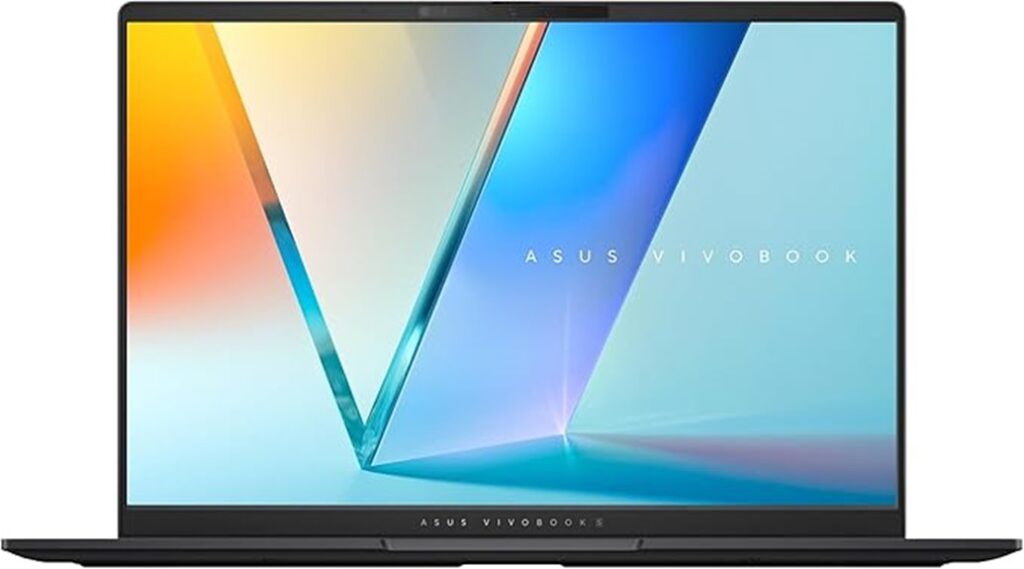
For professionals and enthusiasts using Fusion 360, the ASUS Vivobook S 14 OLED Slim Laptop (M5406WA-DS76) stands out with its powerful AMD Ryzen 9 365 processor, boasting 10 cores that deliver exceptional performance. You’ll appreciate the 24GB LPDDR5X RAM and 512GB SSD, ensuring fast multitasking and ample storage. The stunning 14” 3K OLED display offers 120Hz refresh rates and vibrant colors, perfect for design work. Weighing just 2.87 lbs and only 0.63” thick, it’s ultra-portable. Plus, its customizable RGB backlit keyboard enhances your typing experience, making it a top choice for anyone serious about their projects.
Best For: Professionals and enthusiasts using Fusion 360 who require powerful performance and a vibrant display for design work.
Pros:
- Powerful AMD Ryzen 9 365 processor with 10 cores for exceptional performance.
- Stunning 14” 3K OLED display with 120Hz refresh rates and vibrant colors perfect for design tasks.
- Ultra-portable design at just 2.87 lbs and 0.63” thick, making it easy to carry.
Cons:
- Limited storage capacity with only 512GB SSD, which may not be sufficient for all users.
- Higher price point due to advanced specifications and features compared to entry-level laptops.
- Single-zone RGB backlighting on the keyboard may not satisfy those looking for more advanced customization options.
Samsung Galaxy Book4 Pro Business Laptop (NP944XGK-KG4US)
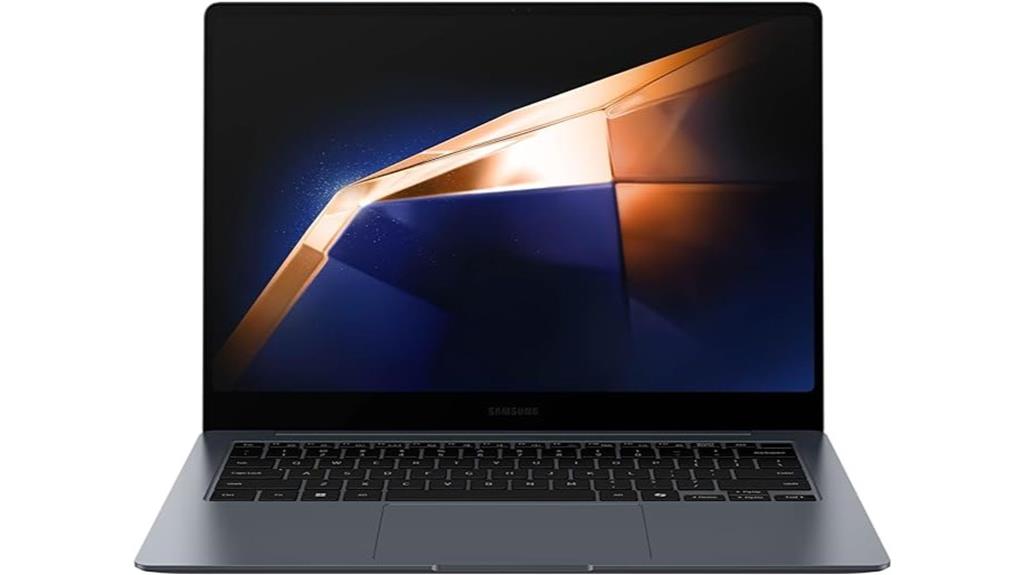
With its powerful Intel Core Ultra 7 processor and 32GB of RAM, the Samsung Galaxy Book4 Pro Business Laptop (NP944XGK-KG4US) is tailor-made for professionals who demand efficiency and performance in their design work. Weighing just 2.71 lbs, it’s lightweight and portable, featuring a stunning 14-inch 3K AMOLED touchscreen that ensures vibrant visuals. The laptop’s 1TB SSD offers ample storage for your projects, while its robust battery life supports up to 8 hours of usage. Plus, with Thunderbolt 4 connectivity and seamless integration into the Samsung ecosystem, you’ll enjoy a smooth workflow whether in the office or on the go.
Best For: Professionals seeking a lightweight and high-performance laptop for design work and multitasking.
Pros:
- Powerful Intel Core Ultra 7 processor and 32GB RAM for efficient performance.
- Stunning 14-inch 3K AMOLED touchscreen for vibrant visuals and enhanced productivity.
- Lightweight design (2.71 lbs) with long battery life and fast charging capabilities.
Cons:
- High retail price compared to competitors, at $1749.
- Limited upgrade options for RAM in certain regions (max 16GB).
- Perceived lower quality of OEM SSD from Western Digital for the price point.
READ MORE: Best Laptops for Penetration Testing, Best Laptops for Mechanical Engineering, Best Laptops for Investment Banking, Best Laptops for Insurance Adjusters, Best Laptops for Plc Programming, Best Laptops for Word and Excel, Best Laptops for Social Media Marketing, Best Laptops for Heavy Excel Use, Best Laptops for Spreadsheets, Best Laptops for Freelancing
Factors to Consider When Choosing the Best Laptops for Fusion 360
When you’re choosing a laptop for Fusion 360, you need to consider several key factors. Processor performance, graphics capabilities, RAM size, storage speed, and display quality all play crucial roles in ensuring a smooth experience. Taking the time to evaluate these aspects will help you find the best fit for your needs.
Processor Performance Importance
Choosing the right processor is crucial for maximizing your experience with Fusion 360, especially since the software relies heavily on CPU power for complex modeling and simulations. A powerful multi-core processor is essential; higher core counts and clock speeds ensure efficient performance. Opt for the latest generation processors, like Intel’s Core Ultra or AMD’s Ryzen series, as they often come with optimizations that enhance responsiveness. Additionally, processors with higher thermal design power (TDP) maintain performance during demanding tasks, preventing throttling. Look for CPUs that support higher RAM bandwidth and fast memory access, as these features help manage large assemblies and high-resolution textures effectively, delivering a smoother and more productive Fusion 360 experience.
Graphics Capability Requirements
A dedicated GPU is essential for anyone looking to run Fusion 360 effectively, as integrated graphics often fall short during complex tasks. Aim for a minimum of 4GB of VRAM to ensure smooth operation, but 8GB or more is ideal for larger assemblies and advanced visual effects. Choose a graphics card that excels in OpenGL performance; this will enhance your rendering speed and responsiveness. Additionally, consider GPUs with advanced technologies like ray tracing and AI acceleration, which dramatically reduce rendering times. This is especially beneficial for real-time rendering and collaboration features, allowing you to visualize and manipulate models seamlessly during teamwork sessions. Investing in a robust graphics card is crucial for an efficient workflow in Fusion 360.
RAM Size Consideration
To run Fusion 360 effectively, 16GB of RAM is your starting point, especially for larger assemblies and intricate designs. If you want optimal performance, particularly during rendering and simulations, aim for at least 32GB or more. This upgrade can significantly reduce loading times and enhance multitasking capabilities. Insufficient RAM can negatively impact Fusion 360’s performance, causing slow response times and potential crashes with resource-intensive files. By upgrading your RAM, you’ll notice smoother navigation and quicker processing of commands within the software. Additionally, consider the potential for future RAM upgrades, as your project demands may increase over time. Investing in a laptop that allows RAM expansion ensures your setup remains capable of handling more complex design requirements down the line.
Storage Speed Necessity
While considering the right laptop for Fusion 360, storage speed plays a vital role in your overall experience. Faster storage directly impacts loading times for large models and project files, enhancing your workflow efficiency. Opt for SSDs (Solid State Drives) instead of traditional HDDs, as they offer quicker read and write speeds, ensuring quicker access to design files. For optimal performance, choose a laptop with at least a PCIe Gen 3 SSD, which provides higher data transfer rates than older SATA SSDs. Additionally, high-speed storage solutions supporting NVMe technology can exceed speeds of 3000 MB/s, significantly improving multitasking capabilities and reducing lag during complex operations. Prioritize these features to elevate your Fusion 360 experience.
Display Quality Features
When selecting a laptop for Fusion 360, prioritizing display quality is essential for achieving precision in your designs. A high-resolution display, like 3K (2880 x 1800) or better, allows you to view intricate details with clarity. Opt for displays with a high refresh rate, such as 120Hz, to enhance smoothness while navigating 3D models. Color accuracy is critical; choose a laptop with a display that covers 100% of the DCI-P3 color gamut to ensure correct color rendering. Look for peak brightness levels of 600 nits or more to improve visibility in various lighting conditions, reducing eye strain. Lastly, an aspect ratio of 16:10 provides extra vertical space, boosting productivity by letting you view more design elements simultaneously.
Battery Life Expectations
Battery life is a crucial factor to consider when choosing a laptop for Fusion 360, especially if you plan to work on intricate designs for extended periods. Ideally, look for a laptop with at least 8-10 hours of battery life to avoid frequent recharging. High-performance laptops often have powerful CPUs and GPUs, which can drain the battery faster during intensive tasks like rendering or simulation. To minimize downtime, consider models with fast charging capabilities. Keep in mind that running Fusion 360 alongside other applications can further decrease battery life. Opting for laptops with efficient processors and integrated graphics can enhance battery longevity, allowing you to focus on your CAD projects without worrying about power interruptions.
Portability and Weight
Portability and weight are vital considerations for anyone working with Fusion 360, especially if you find yourself moving between different locations. Look for laptops that weigh under 3.5 lbs; this lightweight design makes it easier to carry without sacrificing performance. Aim for a slim profile, ideally under 0.7 inches thick, to enhance portability. Battery life is crucial too; a laptop offering at least 8 hours ensures you can work uninterrupted, even away from power outlets. Consider a display size between 14 to 15.6 inches—this strikes a great balance between usability and weight. Lastly, choose models made from lightweight materials like aluminum or magnesium alloy, which help keep the laptop durable yet easy to transport.
Frequently Asked Questions
What Is Fusion 360 and Its System Requirements?
Fusion 360 is a cloud-based 3D modeling software used for product design and engineering. You’ll need a 64-bit processor, at least 4GB RAM, and a dedicated graphics card to run it effectively.
How Much RAM Is Ideal for Running Fusion 360 Smoothly?
For Fusion 360, you’ll want at least 16GB of RAM for smooth performance. If you’re handling larger projects or multitasking, consider upgrading to 32GB. This ensures your workflow remains efficient and hassle-free.
Are Dedicated Graphics Cards Necessary for Fusion 360?
Dedicated graphics cards aren’t strictly necessary for Fusion 360, but they significantly enhance performance, especially when handling complex models. If you’re serious about design work, investing in a dedicated GPU will definitely pay off.
Can I Use Fusion 360 on a Chromebook?
You can’t run Fusion 360 natively on a Chromebook since it requires Windows or macOS. However, using remote desktop applications or virtualization might let you access Fusion 360 on a compatible machine.
How Do I Optimize My Laptop for Better Fusion 360 Performance?
To optimize your laptop for better Fusion 360 performance, close unnecessary applications, update graphics drivers, increase RAM, and adjust power settings. Regularly clear storage and ensure your laptop’s cooling system works efficiently to prevent overheating.
My Final Opinion
When choosing a laptop for Fusion 360, you want performance, portability, and reliability. The options we’ve highlighted, from the powerful Apple MacBook Pro to the sleek Acer Swift X, cater to a variety of needs and budgets. Keep in mind factors like RAM, graphics capability, and battery life to ensure you get the best experience. With the right laptop, you’ll find that your design work flows smoothly, helping you bring your creative visions to life.
